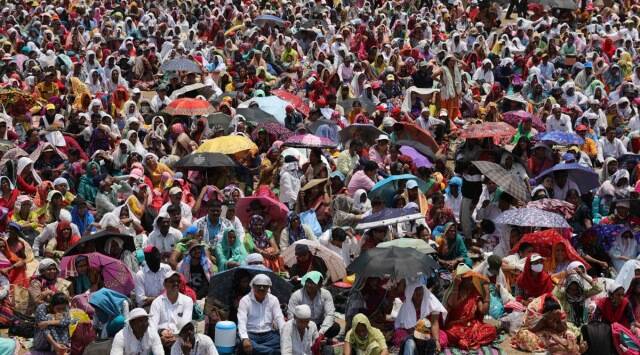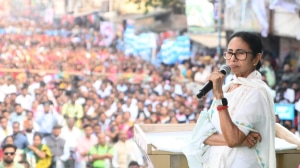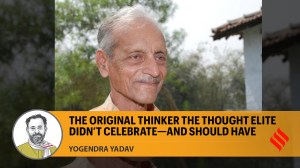Why IMD couldn’t issue heatwave warning: No weather station in Panvel or Kharghar
Rabale is approximately 22 km from Kharghar and IMD officials said that this observatory was set up in 2017, therefore the normal temperature levels of this place was not available because of which a heat-wave warning couldn’t be issued.
 The IMD issues a heatwave warning whenever the daily maximum temperature recorded is higher than normal by a range of 4.5 degrees to 6.4 degrees. (Express Photo)
The IMD issues a heatwave warning whenever the daily maximum temperature recorded is higher than normal by a range of 4.5 degrees to 6.4 degrees. (Express Photo) The India Meteorological Department (IMD) doesn’t have any operational weather observatory in Panvel or Kharghar (Navi Mumbai) because of which it couldn’t send out any heatwave warning on Sunday when 13 people died at the Maharashtra Bhushan Award function at Khargar.
The IMD issues a heatwave warning whenever the daily maximum temperature recorded is higher than normal by a range of 4.5 degrees to 6.4 degrees.
For a coastal city like Mumbai, the maximum temperature also needs to be above 37 degrees in both the weather observatories for the IMD to declare a heat wave.
The IMD has two operational weather observatories in Mumbai at Santacruz and Colaba which recorded 34.1 and 32.4 degrees Celsius on Sunday. The nearest observatory from Kharghar is at the Thane Belapur Industries Association in Rabale, which recorded 38 degrees on Sunday afternoon and showed a relative humidity of 47 per cent.
Rabale is approximately 22 km from Kharghar and IMD officials said that this observatory was set up in 2017, therefore the normal temperature levels of this place was not available because of which a heat-wave warning couldn’t be issued.
“The normal temperature of any particular place is calculated by observing the daily temperature figures for a minimum period of ten years. This was a new observatory so we didn’t have the long-term data available with us to calculate the departure of temperature from normal level based on which heatwave warnings are issued,” said an IMD official.
The official further added that there is an Automatic Weather Station (AWS) in Panvel, which is used for measuring rains only and not daily temperature. “Several parts in interior Maharashtra are recording maximum temperature between 39 and 41 degrees, however, our data states that these are just around 1 degree above normal, therefore, there is no probability of heatwave above these regions,” the official added.
Meanwhile, experts stated that people may have died due to heat stress, which is a result of staying exposed under the sun for longer hours. “The fact that so many people died is because they were exposed under the sun for longer hours due to which their body became dehydrated and exhausted at a faster pace. The authorities need to now carry out a thorough medical investigation of each of these victims to find out their overall health conditions and whether they had any comorbidity,” said Abhiyant Tiwari, lead health and climate resilience at National Resource Defence Council, which seeks to advance national and global climate goals through community-based solutions.







